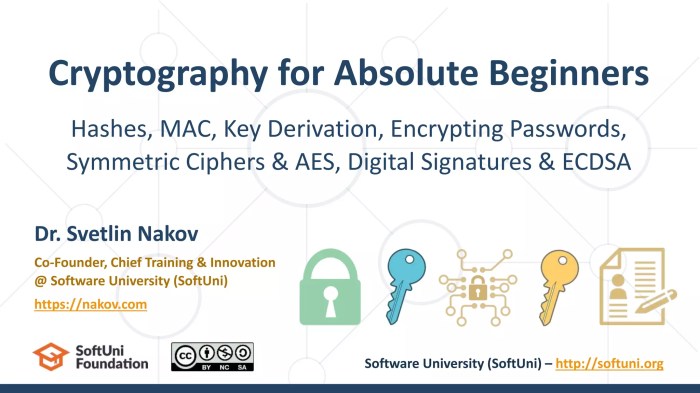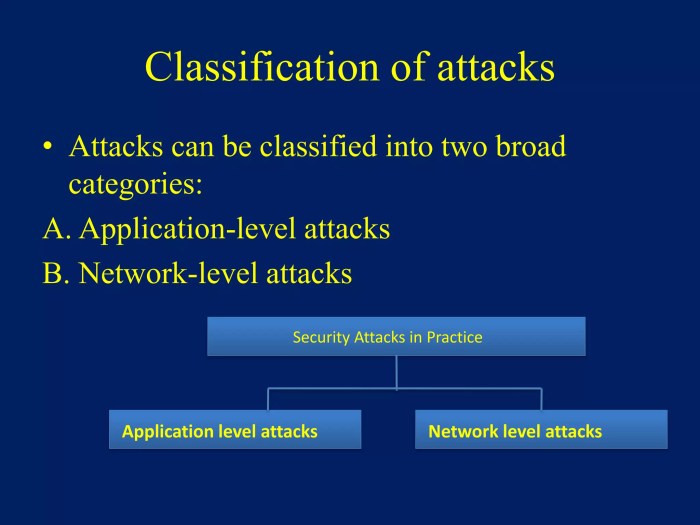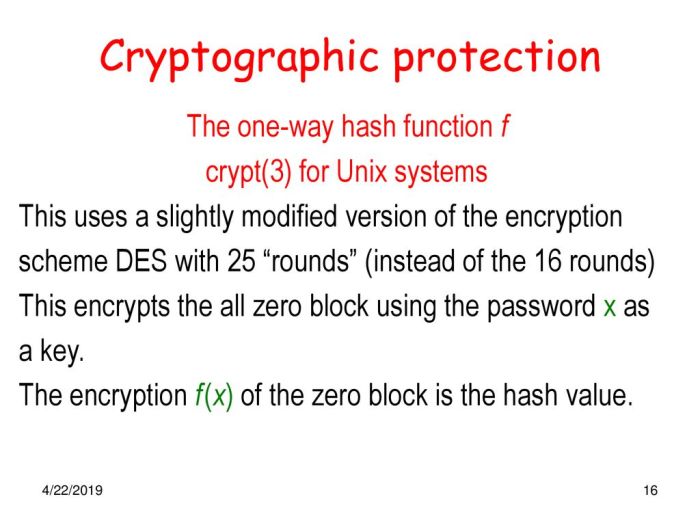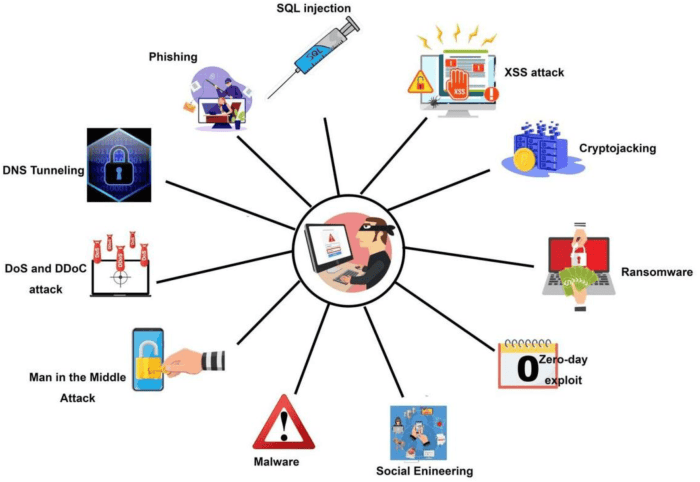The Ultimate Guide to Cryptography for Servers unlocks the secrets to securing your digital infrastructure. This comprehensive guide delves into the core principles of cryptography, exploring symmetric and asymmetric encryption, hashing algorithms, digital signatures, and secure communication protocols like TLS/SSL. We’ll navigate the complexities of key management, explore common vulnerabilities, and equip you with the knowledge to implement robust cryptographic solutions for your servers, safeguarding your valuable data and ensuring the integrity of your online operations.
Prepare to master the art of server-side security.
From understanding fundamental concepts like AES and RSA to implementing secure server configurations and staying ahead of emerging threats, this guide provides a practical, step-by-step approach. We’ll cover advanced techniques like homomorphic encryption and zero-knowledge proofs, offering a holistic view of modern server cryptography and its future trajectory. Whether you’re a seasoned system administrator or a budding cybersecurity enthusiast, this guide will empower you to build a truly secure server environment.
Introduction to Server Cryptography
Server cryptography is the cornerstone of secure online interactions. It employs various techniques to protect data confidentiality, integrity, and authenticity within server environments, safeguarding sensitive information from unauthorized access and manipulation. Understanding the fundamentals of server cryptography is crucial for system administrators and developers responsible for maintaining secure online services.Cryptography, in its simplest form, involves transforming readable data (plaintext) into an unreadable format (ciphertext) using a cryptographic algorithm and a key.
Only authorized parties possessing the correct key can reverse this process (decryption) and access the original data. This fundamental principle underpins all aspects of server security, from securing communication channels to protecting data at rest.
Symmetric-key Cryptography
Symmetric-key cryptography utilizes a single secret key for both encryption and decryption. This approach is generally faster than asymmetric cryptography, making it suitable for encrypting large volumes of data. Examples of symmetric algorithms frequently used in server environments include AES (Advanced Encryption Standard) and DES (Data Encryption Standard), though DES is now considered insecure for most applications due to its relatively short key length.
The security of symmetric-key cryptography relies heavily on the secrecy of the key; its compromise renders the encrypted data vulnerable. Key management, therefore, becomes a critical aspect of implementing symmetric encryption effectively.
Asymmetric-key Cryptography
Asymmetric-key cryptography, also known as public-key cryptography, employs a pair of keys: a public key for encryption and a private key for decryption. The public key can be widely distributed, while the private key must be kept secret. This system eliminates the need to share a secret key, addressing a major limitation of symmetric cryptography. RSA (Rivest-Shamir-Adleman) and ECC (Elliptic Curve Cryptography) are prominent examples of asymmetric algorithms used in server security, particularly for digital signatures and key exchange.
RSA relies on the computational difficulty of factoring large numbers, while ECC offers comparable security with smaller key sizes, making it more efficient for resource-constrained environments.
Hashing Algorithms
Hashing algorithms produce a fixed-size string (hash) from an input of any size. These hashes are one-way functions; it is computationally infeasible to reverse the process and obtain the original input from the hash. Hashing is crucial for verifying data integrity. By comparing the hash of a received file with a previously generated hash, one can detect any unauthorized modifications.
Common hashing algorithms used in server security include SHA-256 (Secure Hash Algorithm 256-bit) and MD5 (Message Digest Algorithm 5), although MD5 is now considered cryptographically broken and should be avoided in security-sensitive applications.
Common Cryptographic Threats and Vulnerabilities
Several threats and vulnerabilities can compromise the effectiveness of server cryptography. These include brute-force attacks, where an attacker tries various keys until the correct one is found; known-plaintext attacks, which leverage known plaintext-ciphertext pairs to deduce the encryption key; and side-channel attacks, which exploit information leaked during cryptographic operations, such as timing variations or power consumption. Furthermore, weak or improperly implemented cryptographic algorithms, insecure key management practices, and vulnerabilities in the underlying software or hardware can all create significant security risks.
For example, the Heartbleed vulnerability in OpenSSL, a widely used cryptographic library, allowed attackers to extract sensitive data from affected servers. This highlighted the critical importance of using well-vetted, regularly updated cryptographic libraries and employing robust security practices.
Symmetric-key Cryptography for Servers
Symmetric-key cryptography is a cornerstone of server security, employing a single secret key to encrypt and decrypt data. This approach offers significantly faster performance compared to asymmetric methods, making it ideal for securing large volumes of data at rest or in transit within a server environment. However, effective key management is crucial to mitigate potential vulnerabilities.
Symmetric-key Encryption Process for Server-Side Data
The process of securing server-side data using symmetric-key encryption typically involves several steps. First, a strong encryption algorithm is selected, such as AES. Next, a secret key is generated and securely stored. This key is then used to encrypt the data, transforming it into an unreadable format. When the data needs to be accessed, the same secret key is used to decrypt it, restoring the original data.
This entire process is often managed by specialized software or hardware security modules (HSMs) to ensure the integrity and confidentiality of the key. Robust access controls and logging mechanisms are also essential components of a secure implementation. Failure to properly manage the key can compromise the entire system, leading to data breaches.
Comparison of Symmetric-key Algorithms
Several symmetric-key algorithms exist, each with its strengths and weaknesses. AES, DES, and 3DES are prominent examples. The choice of algorithm depends on factors like security requirements, performance needs, and hardware capabilities.
Symmetric-key Algorithm Comparison Table
| Algorithm | Key Size (bits) | Speed | Security Level |
|---|---|---|---|
| AES (Advanced Encryption Standard) | 128, 192, 256 | High | Very High (considered secure for most applications) |
| DES (Data Encryption Standard) | 56 | High (relatively) | Low (considered insecure for modern applications due to its short key size) |
| 3DES (Triple DES) | 112 or 168 | Medium (slower than AES) | Medium (more secure than DES but slower than AES; generally considered obsolete in favor of AES) |
Key Management Challenges in Server Environments
The secure management of symmetric keys is a significant challenge in server environments. The key must be protected from unauthorized access, loss, or compromise. Key compromise renders the encrypted data vulnerable. Solutions include employing robust key generation and storage mechanisms, utilizing hardware security modules (HSMs) for secure key storage and management, implementing key rotation policies to regularly update keys, and employing strict access control measures.
Failure to address these challenges can lead to serious security breaches and data loss. For example, a compromised key could allow attackers to decrypt sensitive customer data, financial records, or intellectual property. The consequences can range from financial losses and reputational damage to legal liabilities and regulatory penalties.
Asymmetric-key Cryptography for Servers
Asymmetric-key cryptography, also known as public-key cryptography, forms a cornerstone of modern server security. Unlike symmetric-key systems which rely on a single secret key shared between communicating parties, asymmetric cryptography employs a pair of keys: a public key and a private key. This fundamental difference enables secure communication and authentication in environments where secure key exchange is challenging or impossible.
This system’s strength lies in its ability to securely distribute public keys without compromising the private key’s secrecy.Asymmetric-key algorithms are crucial for securing server communication and authentication because they address the inherent limitations of symmetric-key systems in large-scale networks. The secure distribution of the symmetric key itself becomes a significant challenge in such environments. Asymmetric cryptography elegantly solves this problem by allowing public keys to be freely distributed, while the private key remains securely held by the server.
This ensures that only the server can decrypt messages encrypted with its public key, maintaining data confidentiality and integrity.
RSA Algorithm in Server-Side Security, The Ultimate Guide to Cryptography for Servers
The RSA algorithm, named after its inventors Rivest, Shamir, and Adleman, is one of the most widely used asymmetric-key algorithms. Its foundation lies in the mathematical difficulty of factoring large numbers. In a server context, RSA is employed for tasks such as encrypting sensitive data at rest or in transit, verifying digital signatures, and securing key exchange protocols like TLS/SSL.
The server generates a pair of keys: a large public key, which is freely distributed, and a corresponding private key, kept strictly confidential. Clients can use the server’s public key to encrypt data or verify its digital signature, ensuring only the server with the private key can decrypt or validate. For example, an e-commerce website uses RSA to encrypt customer credit card information during checkout, ensuring that only the server possesses the ability to decrypt this sensitive data.
Elliptic Curve Cryptography (ECC) in Server-Side Security
Elliptic Curve Cryptography (ECC) offers a strong alternative to RSA, providing comparable security with smaller key sizes. This efficiency is particularly advantageous for resource-constrained servers or environments where bandwidth is limited. ECC’s security relies on the mathematical properties of elliptic curves over finite fields. Similar to RSA, ECC generates a pair of keys: a public key and a private key.
The server uses its private key to sign data, and clients can verify the signature using the server’s public key. ECC is increasingly prevalent in securing server communication, particularly in mobile and embedded systems, due to its performance advantages. For example, many modern TLS/SSL implementations utilize ECC for faster handshake times and reduced computational overhead.
Generating and Managing Public and Private Keys for Servers
Secure key generation and management are paramount for maintaining the integrity of an asymmetric-key cryptography system. Compromised keys render the entire security system vulnerable.
Step-by-Step Procedure for Implementing RSA Key Generation and Distribution for a Server
The following Artikels a procedure for generating and distributing RSA keys for a server:
- Key Generation: Use a cryptographically secure random number generator (CSPRNG) to generate a pair of RSA keys. The length of the keys (e.g., 2048 bits or 4096 bits) determines the security level. The key generation process should be performed on a secure system, isolated from network access, to prevent compromise. Many cryptographic libraries provide functions for key generation (e.g., OpenSSL, Bouncy Castle).
- Private Key Protection: The private key must be stored securely. This often involves encrypting the private key with a strong password or using a hardware security module (HSM) for additional protection. The HSM provides a tamper-resistant environment for storing and managing cryptographic keys.
- Public Key Distribution: The public key can be distributed through various methods. A common approach is to include it in a server’s digital certificate, which is then signed by a trusted Certificate Authority (CA). This certificate can be made available to clients through various mechanisms, including HTTPS.
- Key Rotation: Regularly rotate the server’s keys to mitigate the risk of compromise. This involves generating a new key pair and updating the server’s certificate with the new public key. The old private key should be securely destroyed.
- Key Management System: For larger deployments, a dedicated key management system (KMS) is recommended. A KMS provides centralized control and management of cryptographic keys, automating tasks such as key generation, rotation, and revocation.
Hashing Algorithms in Server Security

Hashing algorithms are fundamental to server security, providing crucial mechanisms for data integrity and authentication. They are one-way functions, meaning it’s computationally infeasible to reverse the process and obtain the original input from the hash output. This characteristic makes them ideal for protecting sensitive data and verifying its authenticity. By comparing the hash of a data set before and after transmission or storage, servers can detect any unauthorized modifications.Hashing algorithms generate a fixed-size string of characters (the hash) from an input of arbitrary length.
The security of a hash function depends on its resistance to collisions (different inputs producing the same hash) and pre-image attacks (finding the original input from the hash). Different algorithms offer varying levels of security and performance characteristics.
Comparison of Hashing Algorithms
The choice of hashing algorithm significantly impacts server security. Selecting a robust and widely-vetted algorithm is crucial. Several popular algorithms are available, each with its strengths and weaknesses.
- SHA-256 (Secure Hash Algorithm 256-bit): A widely used and robust algorithm from the SHA-2 family. It produces a 256-bit hash, offering a high level of collision resistance. SHA-256 is considered cryptographically secure and is a preferred choice for many server-side applications.
- SHA-3 (Secure Hash Algorithm 3): A more recent algorithm designed with a different structure than SHA-2, offering potentially enhanced security against future attacks. It also offers different hash sizes (e.g., SHA3-256, SHA3-512), providing flexibility based on security requirements.
- MD5 (Message Digest Algorithm 5): An older algorithm that is now considered cryptographically broken due to discovered vulnerabilities and readily available collision attacks. It should not be used for security-sensitive applications on servers, particularly for password storage or data integrity checks.
Password Storage Using Hashing
Hashing is a cornerstone of secure password storage. Instead of storing passwords in plain text, servers store their hashes. When a user attempts to log in, the server hashes the entered password and compares it to the stored hash. A match confirms a correct password without ever revealing the actual password in its original form. To further enhance security, techniques like salting (adding a random string to the password before hashing) and key stretching (iteratively hashing the password multiple times) are commonly employed.
For example, a server might use bcrypt or Argon2, which are key stretching algorithms built upon SHA-256 or other strong hashing algorithms, to make brute-force attacks computationally infeasible.
Data Verification Using Hashing
Hashing ensures data integrity by allowing servers to verify if data has been tampered with during transmission or storage. Before sending data, the server calculates its hash. Upon receiving the data, the server recalculates the hash and compares it to the received hash. Any discrepancy indicates data corruption or unauthorized modification. This technique is frequently used for software updates, file transfers, and database backups, ensuring the data received is identical to the data sent.
For instance, a server distributing software updates might provide both the software and its SHA-256 hash. Clients can then verify the integrity of the downloaded software by calculating its hash and comparing it to the provided hash.
Digital Signatures and Certificates for Servers: The Ultimate Guide To Cryptography For Servers
Digital signatures and certificates are crucial for establishing trust and secure communication in server environments. They provide a mechanism to verify the authenticity and integrity of data exchanged between servers and clients, preventing unauthorized access and ensuring data hasn’t been tampered with. This section details how digital signatures function and the vital role certificates play in building this trust.
Digital Signature Creation and Verification
Digital signatures leverage public-key cryptography to ensure data authenticity and integrity. The process involves using a private key to create a signature and a corresponding public key to verify it. A message is hashed to produce a fixed-size digest representing the message’s content. The sender’s private key is then used to encrypt this hash, creating the digital signature.
The recipient, possessing the sender’s public key, can decrypt the signature and compare the resulting hash to a newly computed hash of the received message. If the hashes match, the signature is valid, confirming the message’s origin and integrity. Any alteration to the message will result in a hash mismatch, revealing tampering.
The Role of Digital Certificates in Server Authentication
Digital certificates act as trusted third-party vouching for the authenticity of a server’s public key. They bind a public key to an identity (e.g., a server’s domain name), allowing clients to verify the server’s identity before establishing a secure connection. Certificate Authorities (CAs), trusted organizations, issue these certificates after verifying the identity of the entity requesting the certificate.
Clients trust the CA and, by extension, the certificates it issues, allowing secure communication based on the trust established by the CA. This prevents man-in-the-middle attacks where an attacker might present a fraudulent public key.
X.509 Certificate Components
X.509 is the most widely used standard for digital certificates. The following table Artikels its key components:
| Component | Description | Example | Importance |
|---|---|---|---|
| Version | Specifies the certificate version (e.g., v1, v2, v3). | v3 | Indicates the features supported by the certificate. |
| Serial Number | A unique identifier assigned by the CA to each certificate. | 1234567890 | Ensures uniqueness within the CA’s system. |
| Signature Algorithm | The algorithm used to sign the certificate. | SHA256withRSA | Defines the cryptographic method used for verification. |
| Issuer | The Certificate Authority (CA) that issued the certificate. | Let’s Encrypt Authority X3 | Identifies the trusted entity that vouches for the certificate. |
| Validity Period | The time interval during which the certificate is valid. | 2023-10-26 to 2024-10-26 | Defines the operational lifespan of the certificate. |
| Subject | The entity to which the certificate is issued (e.g., server’s domain name). | www.example.com | Identifies the entity the certificate authenticates. |
| Public Key | The entity’s public key used for encryption and verification. | [Encoded Public Key Data] | The core component used for secure communication. |
| Subject Alternative Names (SANs) | Additional names associated with the subject. | www.example.com, example.com | Allows for multiple names associated with a single certificate. |
| Signature | The CA’s digital signature verifying the certificate’s integrity. | [Encoded Signature Data] | Proves the certificate’s authenticity and prevents tampering. |
Secure Communication Protocols (TLS/SSL)
Transport Layer Security (TLS) and its predecessor, Secure Sockets Layer (SSL), are cryptographic protocols designed to provide secure communication over a network, primarily the internet. They are essential for protecting sensitive data exchanged between a server and a client, ensuring confidentiality, integrity, and authentication. This is achieved through a combination of symmetric and asymmetric encryption, digital certificates, and hashing algorithms, all working together to establish and maintain a secure connection.The core function of TLS/SSL is to create an encrypted channel between two communicating parties.
This prevents eavesdropping and tampering with the data transmitted during the session. This is particularly crucial for applications handling sensitive information like online banking, e-commerce, and email.
The TLS/SSL Handshake Process
The TLS/SSL handshake is a complex but crucial process that establishes a secure connection. It involves a series of messages exchanged between the client and the server, culminating in the establishment of a shared secret key used for symmetric encryption of subsequent communication. A failure at any stage of the handshake results in the connection being aborted.The handshake typically follows these steps:
- Client Hello: The client initiates the connection by sending a “Client Hello” message. This message includes the TLS version supported by the client, a list of cipher suites it prefers, and a randomly generated client random number.
- Server Hello: The server responds with a “Server Hello” message. This message selects a cipher suite from the client’s list (or indicates an error if no suitable cipher suite is found), sends its own randomly generated server random number, and may include a certificate chain.
- Certificate: If the chosen cipher suite requires authentication, the server sends its certificate. This certificate contains the server’s public key and is digitally signed by a trusted Certificate Authority (CA).
- Server Key Exchange: The server might send a Server Key Exchange message, containing parameters necessary for key agreement. This is often used with Diffie-Hellman or Elliptic Curve Diffie-Hellman key exchange algorithms.
- Server Hello Done: The server sends a “Server Hello Done” message, signaling the end of the server’s part of the handshake.
- Client Key Exchange: The client uses the information received from the server (including the server’s public key) to generate a pre-master secret. This secret is then encrypted with the server’s public key and sent to the server.
- Change Cipher Spec: Both the client and server send a “Change Cipher Spec” message, indicating a switch to the negotiated cipher suite and the use of the newly established shared secret key for symmetric encryption.
- Finished: Both the client and server send a “Finished” message, which is a hash of all previous handshake messages. This verifies the integrity of the handshake process and confirms the shared secret key.
Cipher Suites in TLS/SSL
Cipher suites define the algorithms used for key exchange, authentication, and bulk encryption during a TLS/SSL session. They are specified as a combination of algorithms, for example, `TLS_ECDHE_RSA_WITH_AES_128_GCM_SHA256`. This suite uses Elliptic Curve Diffie-Hellman (ECDHE) for key exchange, RSA for authentication, AES-128-GCM for encryption, and SHA256 for hashing.The choice of cipher suite significantly impacts the security of the connection.
Older or weaker cipher suites, such as those using DES or 3DES encryption, should be avoided due to their vulnerability to modern cryptanalysis. Cipher suites employing strong, modern algorithms like AES-GCM and ChaCha20-Poly1305 are generally preferred. The security implications of using outdated or weak cipher suites can include vulnerabilities to attacks such as known-plaintext attacks, chosen-plaintext attacks, and brute-force attacks, leading to the compromise of sensitive data.
Implementing Cryptography in Server Environments
Successfully integrating cryptography into server infrastructure requires a multifaceted approach encompassing robust configuration, proactive vulnerability management, and a commitment to ongoing maintenance. This involves selecting appropriate cryptographic algorithms, implementing secure key management practices, and regularly auditing systems for weaknesses. Failure to address these aspects can leave servers vulnerable to a range of attacks, compromising sensitive data and system integrity.
A secure server configuration begins with a carefully chosen suite of cryptographic algorithms. The selection should be guided by the sensitivity of the data being protected, the performance requirements of the system, and the latest security advisories. Symmetric-key algorithms like AES-256 are generally suitable for encrypting large volumes of data, while asymmetric algorithms like RSA or ECC are better suited for key exchange and digital signatures.
The chosen algorithms should be implemented correctly and consistently throughout the server infrastructure.
Secure Server Configuration Best Practices
Implementing robust cryptography requires more than simply selecting strong algorithms. A layered approach is crucial, incorporating secure key management, strong authentication mechanisms, and regular updates. Key management involves the secure generation, storage, and rotation of cryptographic keys. This should be done using a dedicated key management system (KMS) to prevent unauthorized access. Strong authentication protocols, such as those based on public key cryptography, should be used to verify the identity of users and systems accessing the server.
Finally, regular updates of cryptographic libraries and protocols are essential to patch known vulnerabilities and benefit from improvements in algorithm design and implementation. Failing to update leaves servers exposed to known exploits. For instance, the Heartbleed vulnerability exploited weaknesses in the OpenSSL library’s implementation of TLS/SSL, resulting in the compromise of sensitive data from numerous servers. Regular patching and updates would have mitigated this risk.
Common Cryptographic Implementation Vulnerabilities and Mitigation Strategies
Several common vulnerabilities stem from improper cryptographic implementation. One frequent issue is the use of weak or outdated algorithms. For example, relying on outdated encryption standards like DES or 3DES exposes systems to significant vulnerabilities. Another frequent problem is insecure key management practices, such as storing keys directly within the application code or using easily guessable passwords.
Finally, inadequate input validation can allow attackers to inject malicious data that bypasses cryptographic protections. Mitigation strategies include adopting strong, modern algorithms (AES-256, ECC), implementing secure key management systems (KMS), and thoroughly validating all user inputs before processing them. For example, using a KMS to manage encryption keys ensures that keys are not stored directly in application code and are protected from unauthorized access.
Importance of Regular Security Audits and Updates
Regular security audits and updates are critical for maintaining the effectiveness of cryptographic implementations. Audits should assess the overall security posture of the server infrastructure, including the configuration of cryptographic algorithms, key management practices, and the integrity of security protocols. Updates to cryptographic libraries and protocols are equally important, as they often address vulnerabilities discovered after deployment. Failing to conduct regular audits or apply updates leaves systems exposed to attacks that exploit known weaknesses.
For example, the discovery and patching of vulnerabilities in widely used cryptographic libraries like OpenSSL highlight the importance of continuous monitoring and updates. Regular audits allow organizations to proactively identify and address vulnerabilities before they can be exploited.
Advanced Cryptographic Techniques for Servers
Beyond the foundational cryptographic methods, several advanced techniques offer enhanced security and functionality for server environments. These methods address complex challenges in data privacy, authentication, and secure computation, pushing the boundaries of what’s possible in server-side cryptography. This section explores two prominent examples: homomorphic encryption and zero-knowledge proofs, and briefly touches upon future trends.
Homomorphic Encryption for Secure Cloud Data Processing
Homomorphic encryption allows computations to be performed on encrypted data without requiring decryption. This is crucial for cloud computing, where sensitive data is often outsourced for processing. With homomorphic encryption, a server can perform operations (like searching, sorting, or statistical analysis) on encrypted data, returning the encrypted result. Only the authorized party possessing the decryption key can access the final, decrypted outcome.
This significantly reduces the risk of data breaches during cloud-based processing. For example, a hospital could use homomorphic encryption to analyze patient data stored in a cloud without compromising patient privacy. The cloud provider could perform calculations on the encrypted data, providing aggregated results to the hospital without ever seeing the raw, sensitive information. Different types of homomorphic encryption exist, each with varying capabilities and performance characteristics.
Fully homomorphic encryption (FHE) allows for arbitrary computations, while partially homomorphic encryption (PHE) supports only specific operations. The choice depends on the specific application requirements and the trade-off between functionality and performance.
Zero-Knowledge Proofs for Server Authentication and Authorization
Zero-knowledge proofs allow one party (the prover) to demonstrate the truth of a statement to another party (the verifier) without revealing any information beyond the truth of the statement itself. In server authentication, this translates to a server proving its identity without exposing its private keys. Similarly, in authorization, a user can prove access rights without revealing their credentials.
For instance, a zero-knowledge proof could verify a user’s password without ever transmitting the password itself, significantly enhancing security against password theft. The blockchain technology, particularly in its use of zk-SNARKs (zero-knowledge succinct non-interactive arguments of knowledge) and zk-STARKs (zero-knowledge scalable transparent arguments of knowledge), provides compelling real-world examples of this technique’s application in secure and private transactions.
These methods are computationally intensive but offer a high level of security, particularly relevant in scenarios demanding strong privacy and anonymity.
Future Trends in Server-Side Cryptography
The field of server-side cryptography is constantly evolving. We can anticipate increased adoption of post-quantum cryptography, which aims to develop algorithms resistant to attacks from quantum computers. The threat of quantum computing breaking current encryption standards necessitates proactive measures. Furthermore, advancements in secure multi-party computation (MPC) will enable collaborative computations on sensitive data without compromising individual privacy.
This is particularly relevant in scenarios requiring joint analysis of data held by multiple parties, such as financial institutions collaborating on fraud detection. Finally, the integration of hardware-based security solutions, like trusted execution environments (TEEs), will become more prevalent, providing additional layers of protection against software-based attacks. The increasing complexity of cyber threats and the growing reliance on cloud services will drive further innovation in this critical area.
Securing your servers with robust cryptography, as detailed in “The Ultimate Guide to Cryptography for Servers,” is crucial. However, maintaining a healthy work-life balance is equally important to prevent burnout, which is why checking out 10 Metode Powerful Work-Life Balance ala Profesional might be beneficial. Effective cybersecurity practices require clear thinking and sustained effort, making a balanced life essential for optimal performance in this demanding field.
Closure
Securing your servers effectively requires a deep understanding of cryptography. This guide has provided a comprehensive overview of essential concepts and techniques, from the fundamentals of symmetric and asymmetric encryption to the intricacies of digital signatures and secure communication protocols. By implementing the best practices and strategies Artikeld here, you can significantly enhance the security posture of your server infrastructure, mitigating risks and protecting valuable data.
Remember that ongoing vigilance and adaptation are crucial in the ever-evolving landscape of cybersecurity; stay informed about the latest threats and updates to cryptographic libraries and protocols to maintain optimal protection.
Essential FAQs
What is the difference between symmetric and asymmetric encryption?
Symmetric encryption uses the same key for both encryption and decryption, offering faster speeds but requiring secure key exchange. Asymmetric encryption uses a pair of keys (public and private), providing better key management but slower performance.
How often should I update my cryptographic libraries?
Regularly update your cryptographic libraries to patch vulnerabilities. Follow the release schedules of your chosen libraries and apply updates promptly.
What are some common cryptographic vulnerabilities to watch out for?
Common vulnerabilities include weak or reused keys, outdated algorithms, improper key management, and insecure implementation of cryptographic protocols.
Is homomorphic encryption suitable for all server applications?
No, homomorphic encryption is computationally expensive and best suited for specific applications where processing encrypted data is crucial, such as cloud-based data analytics.








